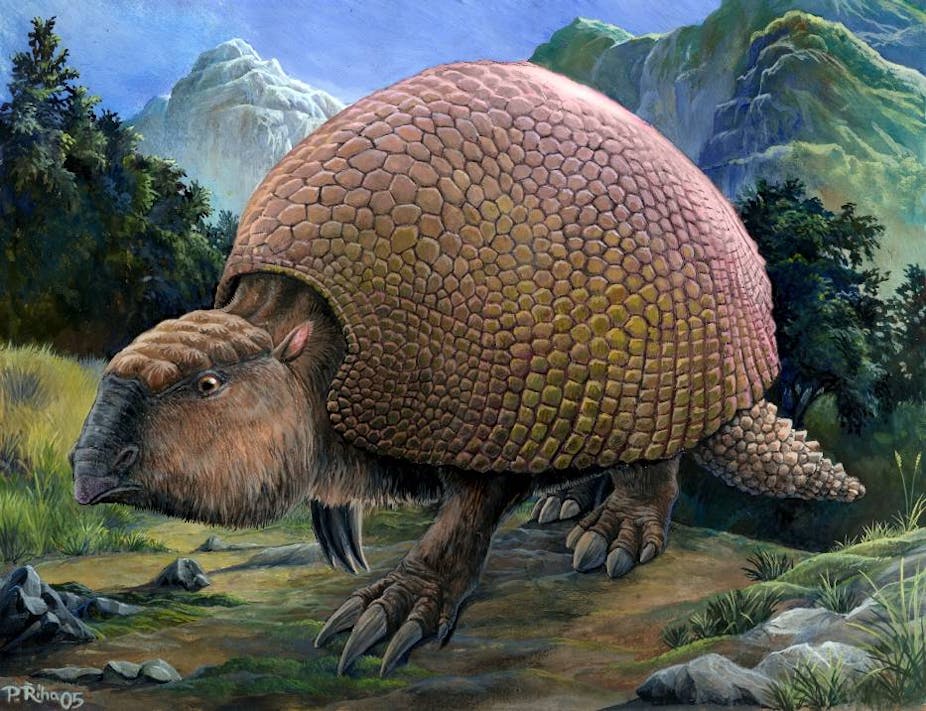If Earth were like a human body, large animals might be its arteries, moving nutrients from where they’re abundant to where they’re needed. Currently the planet has large regions where life is limited by a lack of key nutrients such as phosphorus. The Eastern Amazon basin, for example, is composed of trees that grow relatively slowly due to limited phosphorus. Likewise, animal life in much of the central Amazon is limited by a shortage of sodium.
As recently as 12,000 years ago, much of the world looked like an African savanna. South America teemed with large animals which overlapped with stone age humans, including several species of elephant-like creatures, giant ground sloths, and armadillo-like creatures the size of a small car.

In South America, most nutrients originate in the Andes mountain range and are washed into the forests through the river system. However, on dry land, these nutrients are in short supply unless they are transported by animals in their bodies and deposited in their dung. While small animals distribute nutrients over small distances, large animals have a much greater range. For instance, big animals have larger home ranges than small animals, they eat more, and they have longer guts. When these large animals became extinct, their habitat lost not only them but the nutrients they moved.
With colleagues, I developed a mathematical model, similar to one used by physicists to calculate the diffusion of heat, to estimate the ability of animals to distribute nutrients. The model is based on the body size of the animal, drawing on existing data of their fossilised remains. From this, we can estimate how much the animals ate, defecated, and the range and distance they travelled.
Our model indicated that large animals are not just important, but disproportionately more important than small animals for spreading nutrients. This model allows us to calculate the ability of animals to distribute nutrients anywhere on the planet at any time, if the animal’s average size and distribution is known. It can also be used to estimate the effects of past extinctions, such as those in the Amazon. And furthermore it can forecast the effects of potential events in the future, for example the effects on soil fertility in Africa if elephants became extinct.
We found mass extinctions of large animals in the Amazon 12,000 years ago switched off this natural nutrient pump by a massive 98%. Vital nutrients such as phosphorus were no longer spread around the region but became concentrated in those areas that bordered the floodplains. Even thousands of years after the extinctions, the Amazon basin has not yet recovered from this step change. Nutrients may continue to decline in the Amazon and other global regions for thousands of years to come.
People add nutrients to the planet by using fertiliser in agriculture. However, while large animals tend to distribute nutrients, we tend to concentrate them. Large animals such as cattle are now fenced and unable to spread nutrients around the way free-ranging creatures once did. So today, certain areas have too many nutrients (areas near agriculture) and other areas too few (natural ecosystems).
On today’s planet, the supply of nutrients in the soil is determined by river deposits or nutrients that are airborne. Yet this analysis suggests that we may be experiencing a peculiar post-extinction phase in the Amazon, and probably many other parts of the world where large animals once played a vital role in fertilising their landscape. If humans contributed to the mass extinction of big animals 12,000 years ago, then the human impact on the environment at a global scale began even before the dawn of agriculture.

